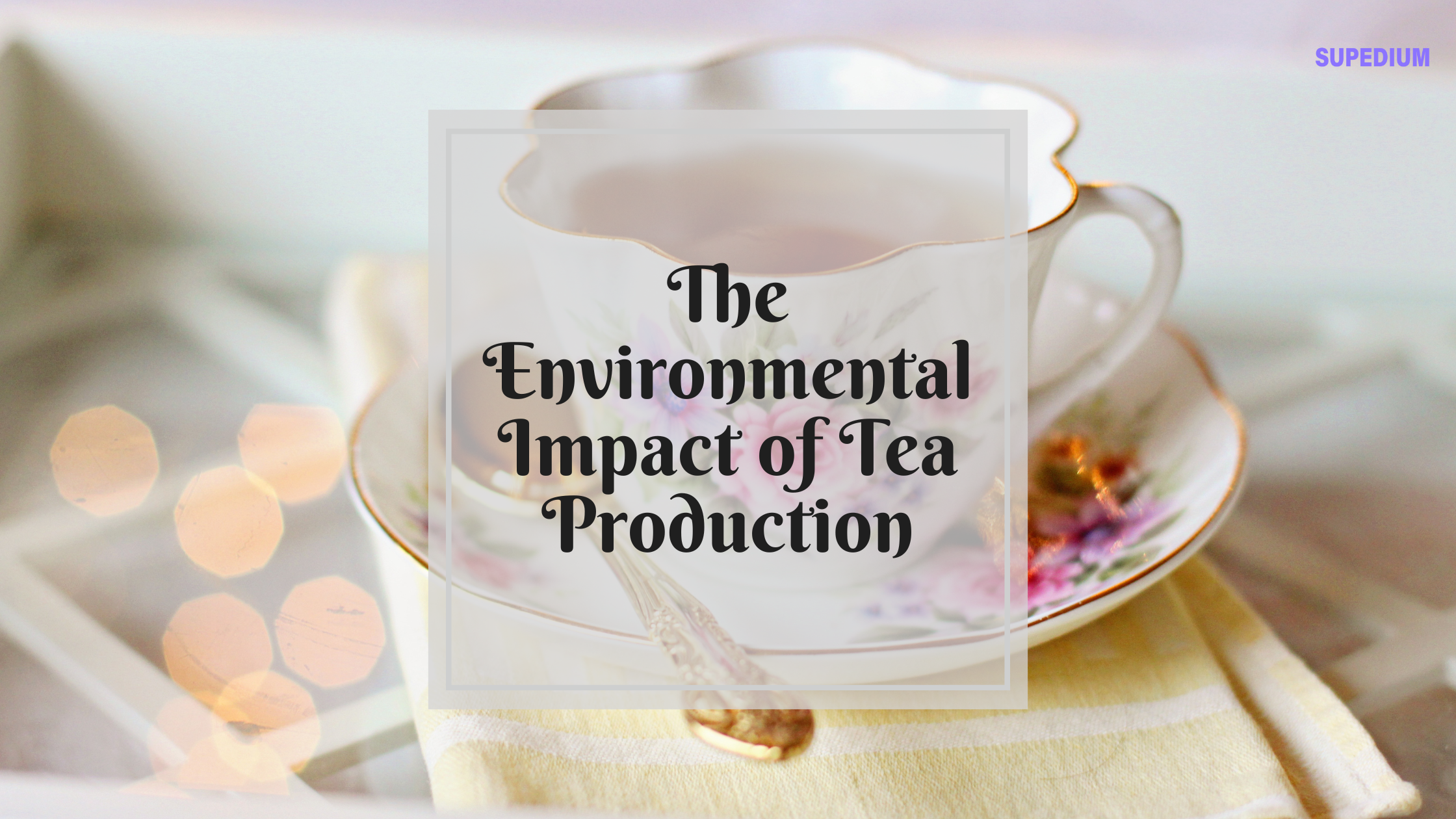Table of Contents
![]()
Tea, a beloved beverage enjoyed by millions worldwide, has a complex environmental footprint. From the fields where it is grown to the cup in your hand, every stage of tea production carries environmental implications. This article delves into the multifaceted impact of tea production on the environment, highlighting the issues and exploring potential solutions.
I. Introduction
Tea production is a significant global industry, deeply woven into the cultural and economic fabric of many countries. The process of cultivating, processing, and distributing tea has far-reaching environmental consequences. Understanding these impacts is crucial for promoting sustainability within the industry and mitigating its ecological footprint.
II. Tea Cultivation
A. Land Use and Deforestation
Tea cultivation often involves converting forests into tea plantations. This deforestation can lead to the loss of biodiversity as natural habitats are cleared to make way for monoculture crops. The extensive clearing of forests for tea plantations not only disrupts local ecosystems but also contributes to climate change by reducing the number of trees that can absorb carbon dioxide.
B. Soil Health
The practice of growing tea in large, monoculture plantations can lead to significant soil degradation. The removal of diverse plant species and the constant cultivation of tea can deplete soil nutrients and lead to increased erosion. This erosion can further degrade the land, making it less fertile and less able to support diverse plant life.
C. Water Use
Tea plants require substantial amounts of water, which can strain local water resources. In regions where tea is grown extensively, such as parts of India, China, and Africa, the high water consumption can deplete local water supplies, affecting both human communities and surrounding ecosystems. The diversion of water for tea cultivation can lead to reduced water availability for other uses and can impact local flora and fauna.
III. Pesticides and Fertilizers
A. Chemical Inputs
To maximize yields and control pests, tea farmers often use chemical pesticides and fertilizers. These substances can have adverse effects on soil health, potentially leading to long-term degradation. Pesticides may kill beneficial insects and other organisms, while fertilizers can contribute to soil and water pollution.
B. Pollution and Health Risks
Runoff from tea plantations, carrying pesticides and fertilizers, can enter local waterways, causing pollution. This runoff can harm aquatic life, leading to issues such as algal blooms that deplete oxygen in the water and kill fish. Additionally, the accumulation of these chemicals in water sources can pose health risks to local communities that rely on these water sources for drinking and agriculture.
IV. Tea Processing
A. Energy Consumption
The processing of tea involves several energy-intensive steps, including withering, rolling, fermenting, and drying. The energy required for these processes often comes from non-renewable sources, contributing to greenhouse gas emissions. The reliance on fossil fuels for processing adds to the overall carbon footprint of tea production.
B. Waste Generation
Tea processing generates various types of waste, including tea dust and stems. This waste needs to be managed properly to minimize environmental impact. Additionally, the wastewater produced during processing can be contaminated with chemicals used in the production process, requiring careful treatment to prevent environmental contamination.
C. Carbon Footprint
The transportation of tea leaves from plantations to processing facilities and eventually to consumers involves significant carbon emissions. This transportation, often across long distances, contributes to the overall carbon footprint of tea. Reducing these emissions is a key challenge for making tea production more sustainable.
V. Packaging and Transportation
A. Packaging Materials
Tea is typically packaged in a variety of materials, including plastic and paper. The environmental impact of these materials varies. Plastic packaging contributes to pollution and waste, as it is not biodegradable and can persist in the environment for centuries. Paper packaging, while more biodegradable, often involves deforestation and can still contribute to waste if not recycled properly.
B. Transportation
The transportation of tea from farms to processing plants and then to markets worldwide involves significant carbon emissions. This transportation often relies on fossil fuels, contributing to global warming. Reducing the carbon footprint of transportation in the tea supply chain is essential for improving the overall sustainability of tea production.
VI. Social and Economic Implications
A. Labor Practices
Tea production often involves labor-intensive work, and the conditions for workers can vary widely. In some regions, tea workers face poor working conditions and low wages. Addressing these labor issues is crucial for ensuring that tea production is not only environmentally sustainable but also socially equitable.
B. Economic Dependencies
Many regions depend economically on tea cultivation. For some communities, tea farming is a primary source of income. However, the environmental impacts of tea production can affect these communities, particularly if resources like water become scarce or if environmental degradation reduces land productivity.
VII. Mitigation and Sustainable Practices
A. Sustainable Farming Techniques
There are several approaches to mitigating the environmental impact of tea production. Organic farming avoids synthetic pesticides and fertilizers, promoting healthier soil and ecosystems. Agroforestry, which integrates trees and other plants into tea plantations, can help improve soil health and reduce erosion. Integrated pest management (IPM) involves using natural predators and other non-chemical methods to control pests, reducing the need for chemical inputs.
B. Reducing Water and Energy Use
Efficient irrigation systems can help reduce water consumption in tea cultivation. Techniques such as drip irrigation ensure that water is delivered directly to the plant roots, minimizing waste. Additionally, using renewable energy sources for processing, such as solar or wind power, can reduce the carbon footprint associated with tea production.
C. Waste Management
Effective waste management practices are crucial for minimizing the environmental impact of tea processing. Recycling and composting tea waste can reduce the amount of solid waste that ends up in landfills. Advancements in wastewater treatment can also help ensure that processing by-products do not contaminate local water sources.
VIII. Case Studies
A. Examples of Sustainable Tea Production
Several tea producers have implemented successful sustainable practices. For instance, some farms in Sri Lanka have adopted organic farming techniques, leading to healthier soils and reduced chemical use. In India, agroforestry practices have been introduced to improve soil health and biodiversity within tea plantations.
B. Impact of Certification Programs
Certification programs such as Organic, Fair Trade, and Rainforest Alliance have made significant strides in promoting sustainable practices in tea production. These certifications often require adherence to environmental and social standards, encouraging producers to adopt more sustainable methods and improve working conditions.
IX. Conclusion
The environmental impact of tea production is significant, encompassing issues related to land use, water consumption, chemical use, and waste. Addressing these challenges requires a multifaceted approach, including the adoption of sustainable farming practices, efficient resource use, and improved waste management. By supporting sustainable practices and certification programs, consumers can play a crucial role in reducing the environmental footprint of tea production. The path forward involves a collective effort from producers, consumers, and policymakers to ensure that the beloved beverage can be enjoyed responsibly and sustainably.
Share This





Be the first to comment